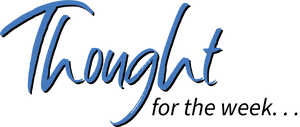Use Summer to Revisit and Reestablish Work and Life Boundaries
We know when working with students that the absence of boundaries does not necessarily lead to freedom, flexibility, and creativity in their work. Often, the lack of boundaries leads to chaos, conflict, and distraction, and in many ways, failing to set boundaries in our lives can lead to similar outcomes. Without boundaries, we often find ourselves uncomfortable, ineffective, and frustrated.
Tony Martignetti, writing in Fast Company, explains that boundary-setting is crucial to being productive, building trust, and finding satisfaction. Martignetti argues that boundaries are less about having to say “no” and more about being able to say “yes” to what we value. Martignetti’s observations about boundary-setting might be summarized as:
- Good boundaries are structures, not barriers. Boundaries help us to decide where to place our energy, what to avoid, and what to let go.
- Effective boundaries are less about time and more about attention. We might think of boundaries as dictating how we spend our time, but boundaries work best when they help us decide where to allocate our mental and physical energy.
- Thoughtful boundaries do not constrain; they clarify. Boundaries can help us to sort out priorities and set goals.
- Sustainable boundaries do not block energy; they protect it. When our energy is in short supply, clear boundaries can preserve what we have and help us to use it where it makes the greatest difference.
- Strategic boundaries do not undermine commitment; they focus it. Gaining clarity about what we value and how we want to live can create new levels of productivity without unduly exhausting our energy or undermining relationships.
Summer can be a great time to reflect on what we value, how we want to live, and how we might set boundaries that maximize our effectiveness and productivity without compromising our health, relationships, and happiness. Here are some ideas to get started:
- Spend time reflecting on what is most important. Clarifying our life and work values can help to set priorities, sort areas of conflict, and guide the establishment of boundaries.
- Revisit current boundaries. Reviewing where current boundaries are working well and identifying boundaries we are ignoring or not following can help us to decide what to keep, what to fix, and what to abandon. If regularly bringing work home and sacrificing family time and relationships is a source of stress, this pattern might be a good place to start.
- Identify “pain points.” We might think about times and circumstances when we feel the greatest guilt, frustration, or exhaustion. They can be good places to focus our boundary-setting work. Often, these situations represent a conflict between what we value and how we behave.
- Reach out to a colleague or friend who seems to set and manage boundaries well. Discovering what works for someone who shares our general circumstances might provide options we can adopt or adapt to fit our needs. As examples, learning how a colleague establishes and manages limits to work hours or has a shutdown routine at the end of the day can provide options and practices we choose to follow.
- Think of boundaries as guidelines to respect, not unbreakable rules. Depending on the boundary, there may be times when we need to flex to accommodate unusual circumstances. Inflexibility can create as much stress and conflict as not establishing a boundary. For example, we might establish a manageable limit to the number of committees and work groups we join, but an emergency or special task force that needs our expertise may lead us to make a temporary exception.
- Notice when frustration, anxiety, or resentment begin to grow. When these feelings persist, they may be signals that it is time to revisit a current boundary or establish a new one. Circumstances can change from year to year, month to month, and even week to week. Boundaries that worked for us in the past may no longer serve us well. As examples, technology we used to control may be starting to control us. Or the time we have blocked out for self-care, family, or relaxation may no longer work for us and needs to be adjusted.
We need boundaries to sustain our energy, mental health, and productivity. Boundaries can create as much freedom as they provide limits. However, we need to establish them with care. The key is to find what works for us and allow our boundaries to give us the structure, clarity, and confidence that can keep us fresh and sustain our enthusiasm and commitment.
Reference:
Martignetti, T. (2025, May 19). Healthy boundaries at work matter more than ever. Here are 7 steps to build them. Fast Company. https://www.fastcompany.com/91334582/healthy-boundaries-at-work-matter-more-than-ever-here-are-7-steps-to-build-them















